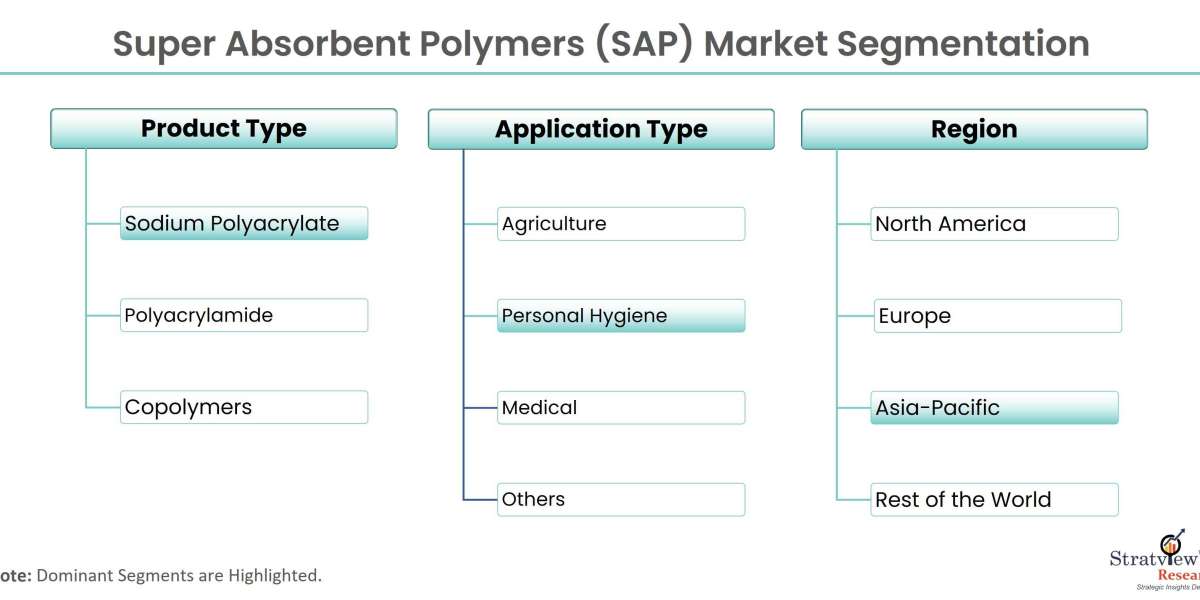Super Absorbent Polymers (SAP) have sparked a revolution in the world of absorbency. These remarkable materials have the ability to absorb and retain large quantities of liquid, making them invaluable in a wide range of industries. From personal care and agriculture to healthcare and beyond, SAPs are transforming the way we manage liquids. In this blog, we will explore the rise of SAPs and their significant impact on various industries, revolutionizing absorbency and opening up new possibilities.
According to Stratview Research, the super absorbent polymers (SAP) market was estimated at USD 9.8 billion in 2021 and is likely to grow at a CAGR of 5.86% during 2022-2028 to reach USD 14.61 billion in 2028.
The Marvel of Super Absorbent Polymers (SAP)
Super Absorbent Polymers are synthetic materials with exceptional absorbency properties. These polymers are typically derived from acrylic acid and its derivatives, which are cross-linked to form a network capable of absorbing and retaining large volumes of liquid relative to their own weight. The absorbency of SAPs is a result of their unique structure, which enables them to form a gel-like substance when in contact with liquid.
Applications in Personal Care
The personal care industry has experienced a significant transformation with the introduction of SAPs. These polymers have revolutionized products such as baby diapers, adult incontinence products, and feminine hygiene products. SAPs can absorb and lock away liquid, keeping the skin dry, preventing leakage, and providing enhanced comfort. The superior absorbency of SAPs has led to longer-lasting, more efficient, and comfortable products for users of all ages.
Advancements in Agriculture
Super Absorbent Polymers have revolutionized agricultural practices, particularly in water management. SAPs are used as soil conditioners to improve water retention in arid regions or areas prone to drought. By absorbing and retaining water, SAPs help plants access moisture during dry periods, reducing irrigation frequency and conserving water resources. SAPs also contribute to efficient nutrient delivery, as they can absorb and release fertilizers slowly, ensuring optimal absorption by plants.
Healthcare and Medical Applications
In the healthcare industry, SAPs have found valuable applications in wound dressings and medical devices. SAP-based wound dressings provide an optimal moist environment for wound healing, promoting faster recovery and reducing the risk of infection. These dressings can absorb and retain wound exudate, creating a barrier against external contaminants while maintaining an ideal healing environment. Additionally, SAPs are used in medical devices such as ostomy products and disposable bed pads, offering efficient liquid containment and absorption.
Versatility in Packaging and Beyond
Super Absorbent Polymers have also made their mark in the packaging industry. By incorporating SAPs into packaging materials, companies can protect goods from damage caused by leakage. SAPs effectively absorb and immobilize liquids, ensuring product integrity and reducing the risk of spoilage during transportation and storage. Furthermore, SAPs have been utilized in controlled-release systems for chemicals and fragrances, providing extended and controlled release properties.
Future Innovations and Sustainability
The rise of SAPs in various industries has paved the way for ongoing research and innovation. Future advancements in SAP technology are focused on improving performance, enhancing biodegradability, and exploring sustainable alternatives. Bio-based SAPs derived from renewable resources and the utilization of bio-waste as raw materials are gaining attention, aligning with the industry's commitment to sustainability.
Conclusion
Super Absorbent Polymers (SAPs) have revolutionized the way we manage liquids in a multitude of industries. From personal care and agriculture to healthcare and packaging, SAPs have enhanced absorbency, improved efficiency, and provided innovative solutions. As research and development continue, SAP technology will evolve further, with a focus on sustainability and performance.





